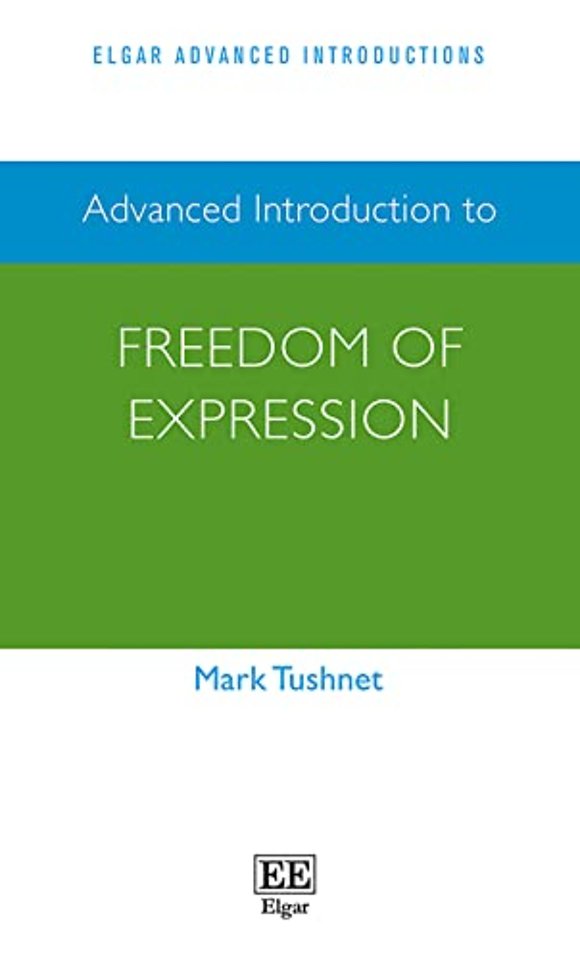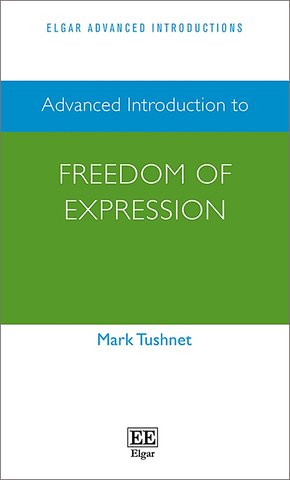Advanced Introduction to Freedom of Expression
Samenvatting
The Advanced Introduction to Freedom of Expression provides an overview of major issues in the doctrinal structure of a law of freedom of expression, relevant to discussions of freedom of expression under many national constitutions. Assuming familiarity with basic theories of free expression, this book addresses the implications of reasonable disagreement between legislatures and courts about whether a specific measure violates freedom of expression, the implications of the fundamental proposition that speech can cause harm, the distinction between the coverage of freedom of expression and the protections it affords, and the appropriate doctrinal forms when speech is said to conflict with other rights such as equality, or merely other social interests. The book will be of interest to anyone, including students, teachers, researchers and policymakers wanting to learn more about the freedom of expression and the law.
Mark Tushnet presents a concise yet comprehensive overview of free expression law, understood as a form of constitutional law. Confronting the major issues of free expression – speech critical of government, libel law, hate speech regulation, and the emerging challenges posed by new technologies – he evaluates the key questions and potential difficulties for future generations.
Contrasting the United States with current law in Europe and elsewhere, Tushnet argues that freedom of expression around the world should reflect deference to legislative judgements, unless those judgements reflect inadequate deliberation or bias, and that much of the existing free expression law is consistent with this view.
Key features include:
• Comprehensible for both students of law and non-specialist readers interested in freedom of expression from a legal perspective
• Viewpoints from multiple legal systems including analysis of decisions made by the US Supreme Court and the European Court of Human Rights
• Explains the two legal doctrinal structures: categorical, rule-bound approaches and standards-based approaches
• List of key references for further reading, allowing readers to extend their knowledge of the topic past the advanced introduction.
This Advanced Introduction will be an essential foundational text for students of law, as well as those from a political science background who can view freedom of expression from a legal perspective.
Specificaties
Inhoudsopgave
1. Basic Concepts
2. Justifications for Regulating Speech
3. The Distinction between Coverage and Protection
4. Rights Versus Rights/Rights Versus Interests
5. Subsidies and Content-Neutral Regulations
6. New (?) Challenges
Conclusion
Index
Anderen die dit boek kochten, kochten ook
Net verschenen
Rubrieken
- aanbestedingsrecht
- aansprakelijkheids- en verzekeringsrecht
- accountancy
- algemeen juridisch
- arbeidsrecht
- bank- en effectenrecht
- bestuursrecht
- bouwrecht
- burgerlijk recht en procesrecht
- europees-internationaal recht
- fiscaal recht
- gezondheidsrecht
- insolventierecht
- intellectuele eigendom en ict-recht
- management
- mens en maatschappij
- milieu- en omgevingsrecht
- notarieel recht
- ondernemingsrecht
- pensioenrecht
- personen- en familierecht
- sociale zekerheidsrecht
- staatsrecht
- strafrecht en criminologie
- vastgoed- en huurrecht
- vreemdelingenrecht







